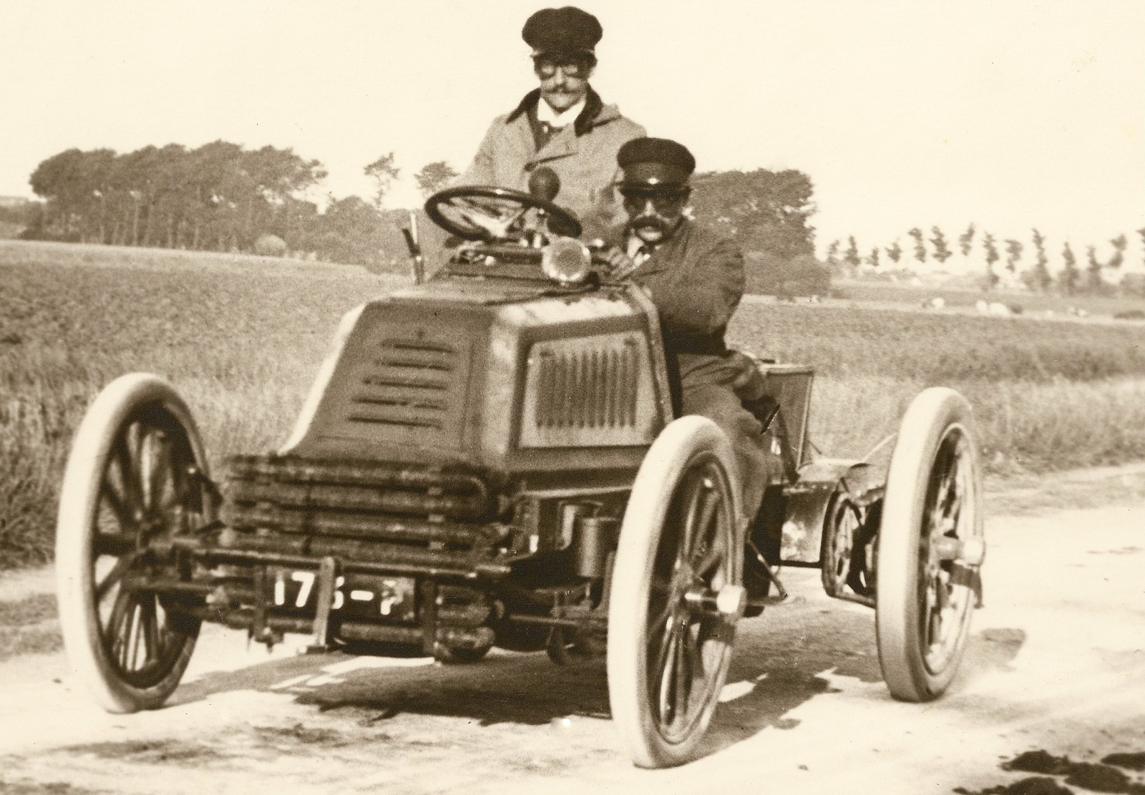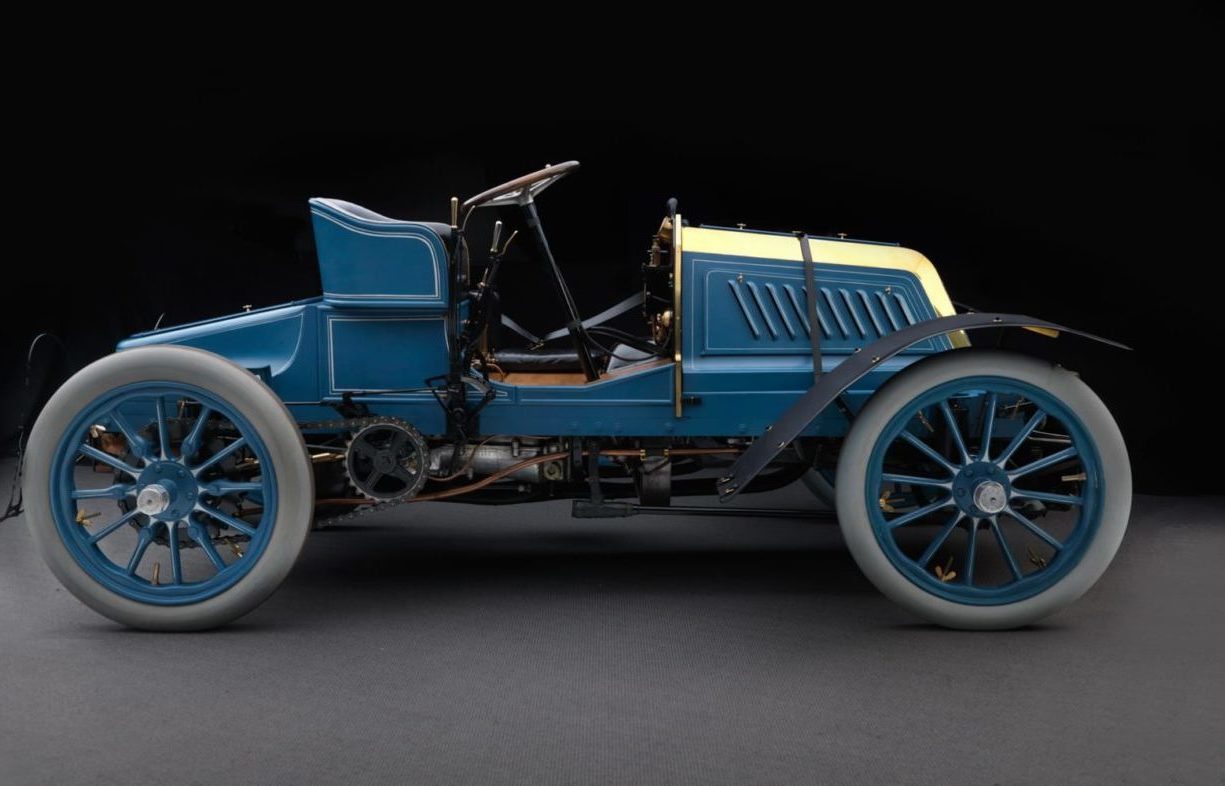Tech Specs
Four-cylinder engine, 9236cc (573 cubic inches), magneto ignition. 60 hp at 1400 rpm.
Before/After
1902 Mors


About the 1902 Mors Type Z Racing Car
At the dawn of the 20th century, Europe’s two great racing marques were Panhard and newly ascendant Mors. La Société d’Electricite et des Automobiles Mors, originally known for electrical products, achieved automobile fame with victories in the great, open road, city-to-city races from 1899 through 1903. This 60 hp type Z was one of six Mors entries for the 1902 Paris-Vienna race that also encompassed that year’s Gordon-Bennett Trophy event.
For 1902, a 1,000 kilogram weight limit (plus an extra 7 kilograms for magneto ignition) was applied to the fastest “heavy” class in an attempt to reduce the furious speeds of 1901. Manufacturers responded with more horsepower than ever in spidery ultra light chassis. Strategically not matching the prodigious power of archrival Panhard, Mors chose a more conservative approach; “pneumatic” shock absorbers for better handling and a mechanically efficient direct drive top gear to redress Panhard’s horse power advantage.
The first day, leading all 136 competitors, Fournier must have found Mors’ strategy to his liking as he roared past the organizers’ high-speed press train at over 70 mph trailing a huge plume of road dust. Despite such a brave start, all but one of the Mors entries came to grief. This car, that of the Baron de Caters, placed 9th after 615 miles and three days of brutal racing over the arrow straight Routes Nationales of France, unpaved, potholed Alpine passes and the scorching, undulating roads of central Europe.
Yet, the sheer speed of the Sixty was enough to see three challenges to the world Land Speed Record by Type Z Mors racers in short order. William K. Vanderbilt, the American millionaire, led off at Ablis, near Chartres, France, on August 5, 1902, being timed at 76.08 mph, thereby becoming the first internal combustion powered titleholder.
Photos – Peter Harholdt










